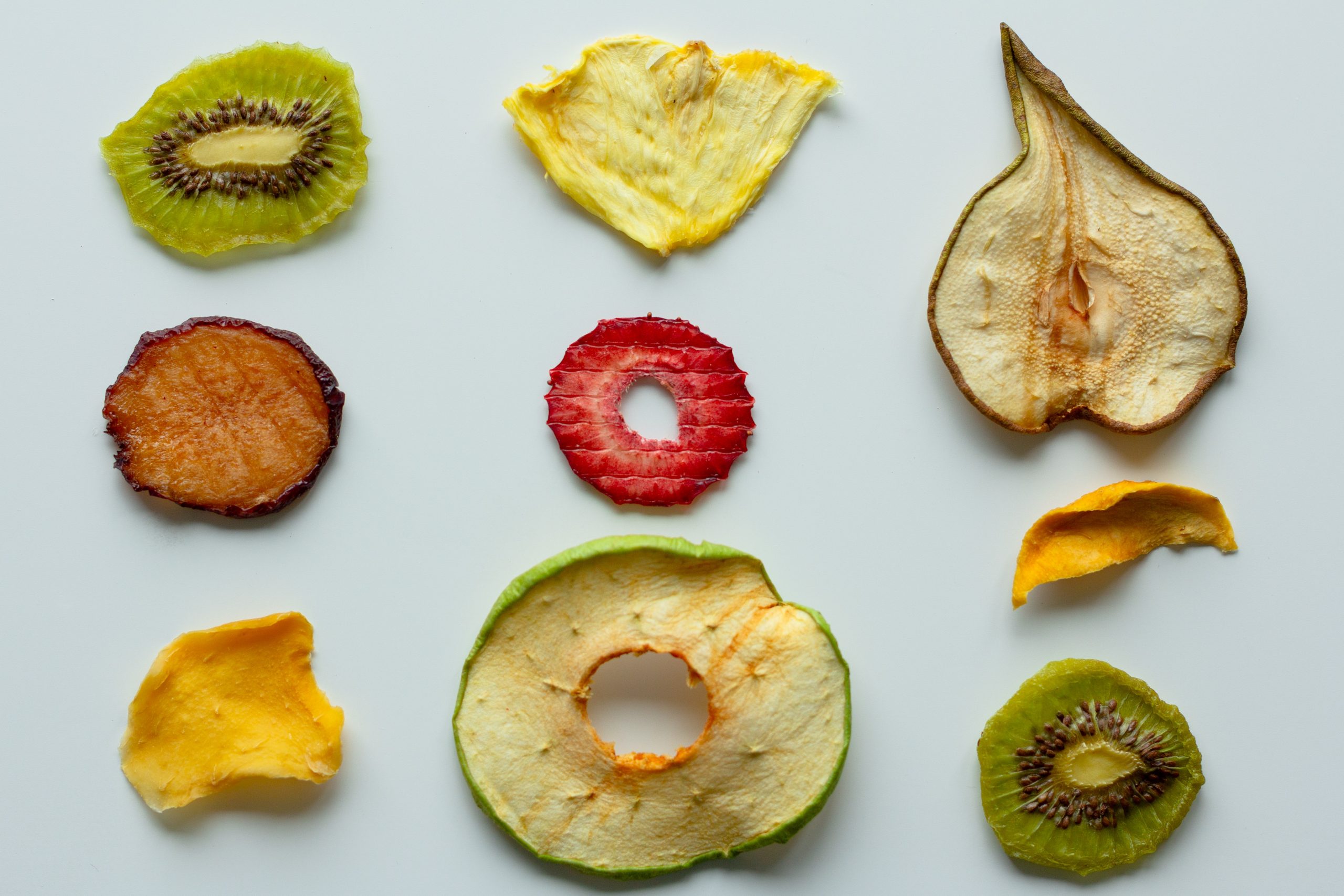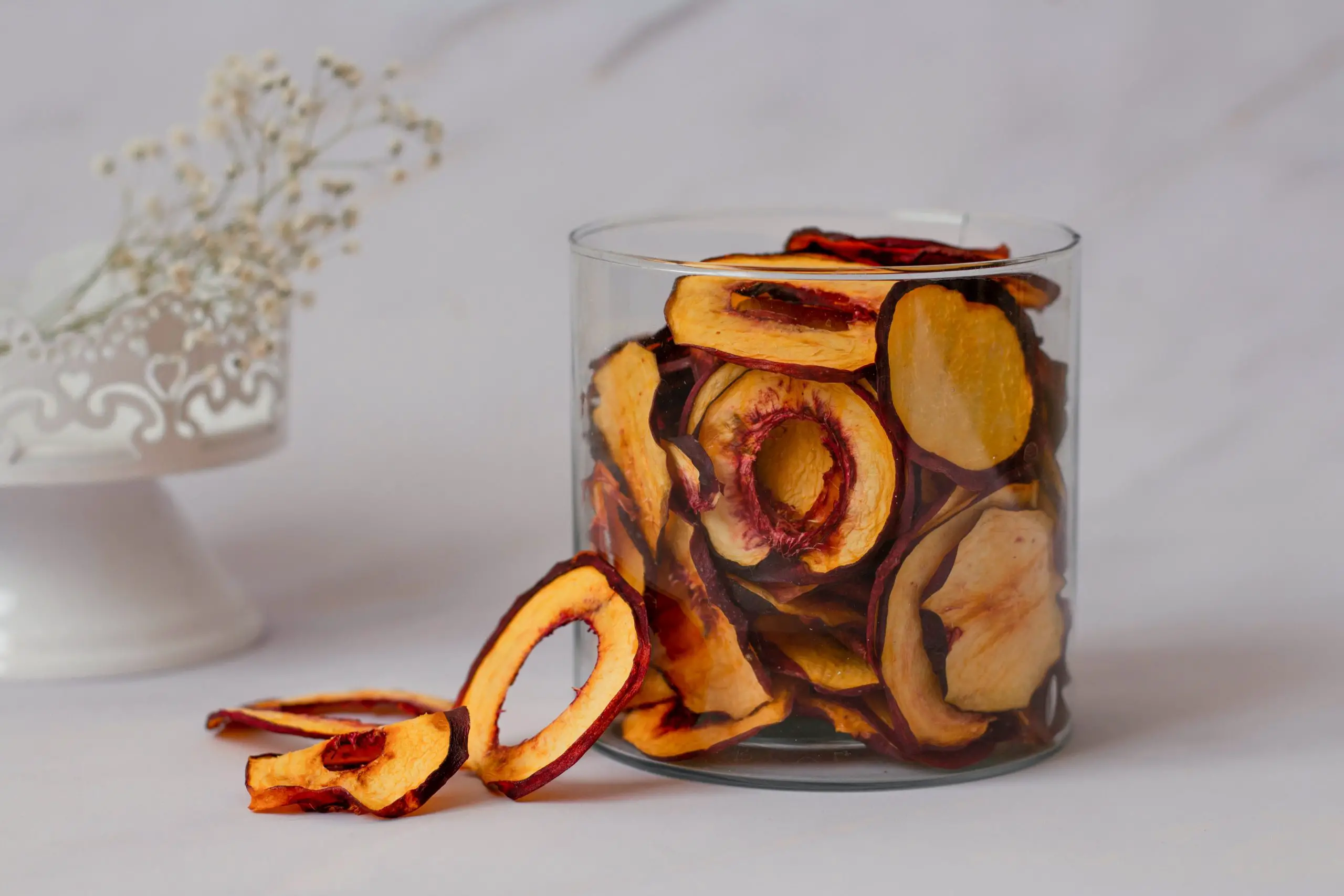If you want to know how to store freeze-dried fruit and you’re looking for recipes that use freeze-dried fruit, you’ve come to the right place. Read on to learn the benefits and shelf-life of these dry fruits. There are also many health benefits to enjoy. And don’t forget to learn about shelf life—freeze-dried fruit is a great way to extend the life of your fresh fruit.

How to Store Freeze-dried Fruit?
If properly packaged, freeze-dried food can be kept in perfect condition for up to 25 years. Freeze-dried foods are tasty, nutrient-rich, and lightweight, but they are delicate and sensitive to light, heat, and moisture, so proper storage is crucial.
You may wonder how to preserve packages of frozen foods you have already opened or store frozen foods for the first time. You can store your freeze-dried fruit by following the information given below.
1. Verify that the Meal is Perfectly Dry:
To ensure that the food lasts as long as possible, it is imperative to dry everything out completely. Any remaining moisture might lead to food spoilage. Storing freeze-dried food before it has dried completely is a typical error. Store-bought freeze-dried food can be kept for as long as you like if you’re trying to preserve it; ensure there is little to no moisture.
Cut a large food item in half, looking for any traces of water or ice to confirm that the item has completely dried. If the interior is still cold, you should also inspect that. Put the food back into the freeze drier for another cycle if the interior feels chilly or if any ice crystals are present.
2. Choose the Suitable Storage:
Your freeze-dried food can be stored in a variety of ways. A vacuum-sealed box in a mylar bag is the best choice. Each choice provides a higher level of security. Depending on how long you want to keep your food in storage. Read on to discover more.
Plastic Bag: Simple plastic bags should only be used for temporary storage because they provide minimal protection for long-term holding. Even freezer bags are inadequate when trying to store freeze-dried food for an extended period.
Plastic bags from the store are transparent, fragile, not airtight, and thin. They don’t offer much protection against air, light, or extremely high or low temperatures, all of which might speed up the deterioration of your freeze-dried food. The other solutions on this list are significantly stronger and are advised instead of using plastic bags, which are better than nothing.
Glass Container with a Lid: Foods that need less time in storage and will be consumed more frequently perform well in uncomplicated, airtight containers like a mason jar. Yogurt and other dairy products are among these.
Without additional security, these goods can be conveniently kept for a few months in a pantry. For a limited time, mason jars do a good job preserving the food within, but they can’t do so continuously because oxygen can’t be completely removed. If you open the container, remember to close the lid tightly.
Vacuum-Sealing Bags: The vacuum Sealing bag with a packing machine that reduces all air is the next step in storage strength. The vacuum storage bags are designed to last longer than regular plastic bags since they are thicker and more robust.
A vacuum storage bag should work well if you intend to keep the freeze-dried food in storage for a medium length (1 to 10 years). However, they are clear and allow light to enter, which is a disadvantage. Just be careful to shut the container tightly.
The Mylar Bag: Mylar bags are the best option for keeping freeze-dried food on hand for a long time. Mylar is an aluminum foil-mounted transparent polyester resin. Online shopping for it is simple. Consider it to be a flexible tin can. Mylar is available in a range of sizes and thicknesses.
Depending on your food sealer, you can seal the mylar bag completely to provide the highest level of security. The best material is Mylar because it is thin, light, and flexible. It is simple to store and carry because the packaging is quickly collapsible and does not add extra weight. Also robust and long-lasting is Mylar. It is hard to tear or break.
3. Eliminate All Moisture and Air
When it comes to freeze-dried preservation, air and moisture are the enemies of appropriate storage and lifespan. You want to eliminate as much air as you can when sealing. The last trace of oxygen in the bag can be removed using oxygen absorbers, which are a perfect tool for the job. Depending on your application, they come in various sizes and can be bought in bulk.
The package is prepared for storage once thoroughly sealed, removing all moisture and air. For optimal results, your freeze-dried food should be kept in a dimly lit area. The kitchen cupboard, pantry, or emergency food storage box are the ideal settings. The temperature of storage is crucial. Avoid extreme or overheated temperatures. Food should ideally be stored at room temperature.
How to Use Freeze-Dried Fruit in Recipes?
Frozen fruit is a great ingredient for baking because of the bright colors it imparts. It also adds tanginess since the fruit’s citric acid is concentrated during freezing. As a mix-in, you can add fruit to muffins, cookies, and cakes. Add pink-tinted strawberries or mangoes to the confectioners’ sugar for a pastel-colored dessert. They are also great in trail mix.
When baking, freeze-dried fruit can be used alone or rehydrated to add moisture to a baked product. They provide a crispy texture without cooking but must be rehydrated before baking. Rehydrating fruit is easy, and juices or liqueurs can enhance the flavor. A little brandy can also help with the process. It’s an excellent alternative to fresh fruit when you need extra flavor.
Freeze-drying allows the fruit to preserve its flavor and nutrients while minimizing the use of preservatives. Many fruits and vegetables are already dehydrated, so freeze-drying them will not destroy their nutritional value. Freeze-dried fruit is also a great snack and is as versatile as fresh fruit. The flavor of the fruit is also more intense. It’s not surprising that frozen fruit is so popular among people who enjoy healthy snacks or who love to bake.
What’s the Shelf Life of Freeze-Dried Fruit?
Free-dried food is far better suited for long-term storage despite what might be expected. Freeze-dried food seems to have a shelf life of 25 years or more because, during the process, 98–99 percent of the moisture is removed.
Fruit that has not been opened or eaten for a long time can quickly go bad when exposed to moisture. Excess moisture creates an environment for microbial growth and chemical reactions. Without moisture, freeze-dried fruit remains fresh and edible for 25 to 30 years.
Freeze-dried food’s color is a reliable indicator of its freshness. The flaking color signifies that the flavor, freshness, and nutritional content are starting to deteriorate. The punch won’t be as strong, but it’s still safe to eat.
What are the Health Benefits of Freeze-Dried Fruit?
Freeze-dried fruit is a superfood that offers the same nutrition and benefits as fresh fruit in half the original amount. This method is beneficial because it eliminates water, making the fruit more nutrient-dense. Fruits freeze-dried without sugar or preservatives are also higher in antioxidants than fresh fruit.
These fruits frequently have lower calorie counts and more fiber than fresh fruit, making them a healthy snack. Freeze-dried fruit has similar nutritional value to its fresh counterpart. However, many nutrients are removed during the freezing process. However, freeze-dried fruit contains a higher fiber, vitamin C, and potassium concentration than its fresh counterpart.
These vitamins and minerals are important for immune system health and help regulate blood pressure. Freeze-dried fruit also tastes great and doesn’t contain preservatives. Once the fruit is frozen, it should be kept in an airtight container and away from sunlight. It should not be exposed to light, as sunlight can cause the fruit to soften and turn bad.
Conclusion
Another benefit of freeze-dried fruit is its shelf stability. Store your dried fruit in an airtight container. These can be vacuum-sealed bags, freezer containers, or canning jars. The key is to pack them as tightly as possible without damaging them. Then, store them in an airtight location where the temperature stays between 33 and 75 degrees.
The majority of astronaut meals have freeze-dried fruit as their main component. They can be quickly reconstituted with water and don’t need to be cooked. Because they don’t require refrigeration, you can store them for months or even years. Of course, it is crucial to keep in mind that fruit that has been frozen-dried won’t have a fresh texture.

